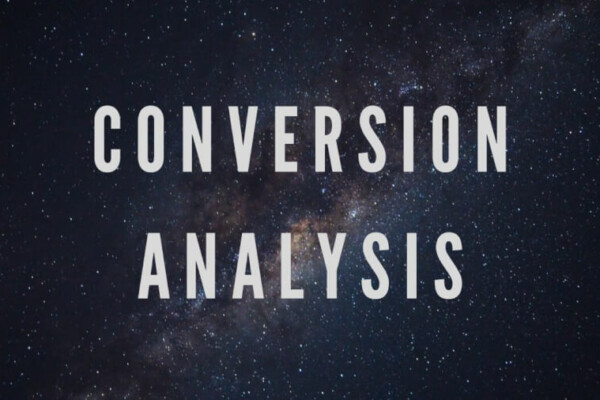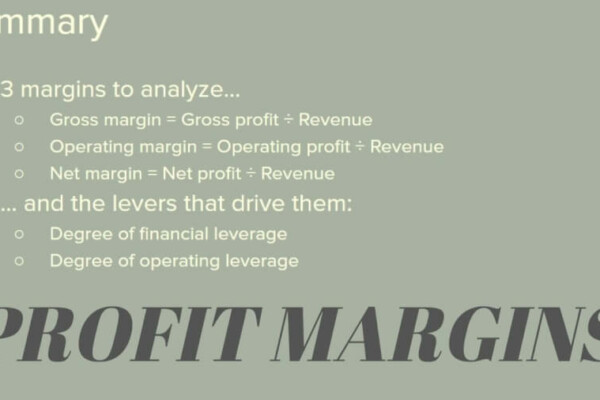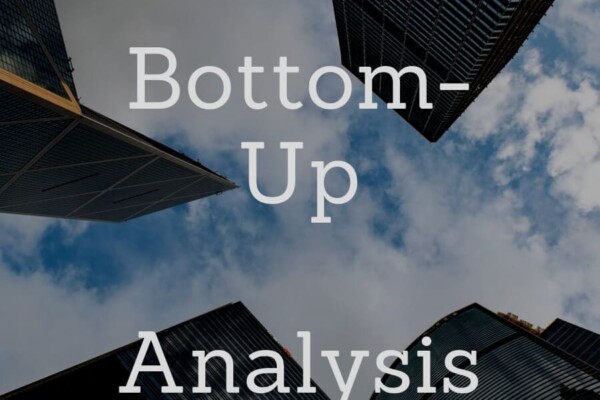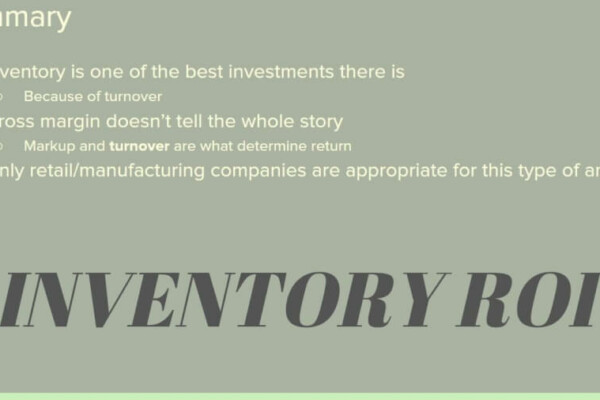“What is a safe harbor statement?” It is a forward-looking statement that doesn’t pretend to be a fact. It is merely speculation about future events and therefore should not be relied upon as a certainty.
Before I delve into this subject, the distinction must be made between actual forward-looking statements and disclosures about forward-looking statements. Both will be addressed in this post.
Actual forward-looking statements use words or phrases such as:
- “Believe”
- “Expect”
- “Estimate”
- “Intend”
- “Forecast”
- “Plan”
- “Predict”
- Among many others
On the other hand, the forward-looking statement disclosure is where management makes it clear that discussion about the future is uncertain and events are not guaranteed.
Why are forward-looking statements important?
For investors, they provide information about risk and aid in the creation of forecasts amid uncertainty.
Management knows more about the company than anybody. Isn’t it nice to get a little bit of insight into their vision of the future?
Are forward-looking statement disclosures required?
No.
Publicly traded companies are not technically required to provide these disclosures. Nevertheless, after the Private Securities Litigation Reform Act was passed in 1995, most companies began including forward-looking statement disclosures in their SEC filings, investor communications, and press releases.
Doing so provides them with a “safe harbor” because they are upfront about the fact that they are speculating, and their outlook for the future won’t necessarily come to fruition.
How many companies provide forward-looking statement disclosures?
Most companies take advantage of the “safe harbor” provided by making forward-looking statement disclosures. As shown below in the examples, by including some boilerplate text, they can (hopefully) protect themselves from regulatory risk.
You’d be hard-pressed to find a company that doesn’t provide forward-looking statement disclosures.
Are forward-looking statements useful?
This is a matter of opinion.
However, as I’ve outlined in my sales target analysis and stock valuation spreadsheet posts, any help you can get with forecasting into the future is good. In the case of forward-looking statements, you get your information from the horse’s mouth, so to speak.
Now, obviously, you want to run this information through your BS detector. You also want to judge it against what you already know about the company. If you scrutinize forward-looking statements in this manner, the information can be useful.
Some people don’t feel the same way. They feel that guidance for sales, costs, earnings, or any other financial information is potentially misleading. It creates more risk than reward for investors.
It’s up to each company to determine how much guidance they want to provide. And, up to each investor to decide how much they want to rely upon this guidance.
What can forward-looking statements tell us about management’s long-term outlook?
Forward-looking statements can provide investors with insight into management’s long-term outlook. They can help investors determine if a long-term outlook even exists. Or, if management has a solely short-term mindset. This aids investors in determining if buying stock in this company is right for them.
Another benefit is that forward-looking statements can shed light on risk factors. As mentioned in a couple of previous posts, an understanding of the risks that threaten the organization (and your investment) is critical to making an educated decision about purchasing a company’s stock.
Here are some other ways that forward-looking statements provide transparency for investors:
- Understand the company’s grasp on the market it operates in and the environment it faces.
- Gain some insight into management’s thinking. What are they focused on and what do they seem to ignore?
- Get a determination of management’s optimism or pessimism about the future.
- Determine how frequently, and to what degree, management changes it’s outlook.
- Get a feel for management’s short-term tweaking of financials – if any.
- Compare the forward-looking statements of the company you’re analyzing to its competitors
- Obtain a better understanding of management style/philosophy. In turn, a better understanding of their ability to manage the company for growth
Forward-looking statement disclosure examples with analysis
To better understand the purpose of forward-looking statements and how they help investors understand management’s long-term outlook, let’s look at a few real-life examples of disclosures.
Microsoft Corporation (MSFT)
This report includes estimates, projections, statements relating to our business plans, objectives, and expected operating results that are “forward-looking statements” within the meaning of the Private Securities Litigation Reform Act of 1995, Section 27A of the Securities Act of 1933, and Section 21E of the Securities Exchange Act of 1934. Forward-looking statements may appear throughout this report, including the following sections: “Business” (Part I, Item 1 of this Form 10-K), “Risk Factors” (Part I, Item 1A of this Form 10-K), and “Management’s Discussion and Analysis of Financial Condition and Results of Operations” (Part II, Item 7 of this Form 10-K). These forward-looking statements generally are identified by the words “believe,” “project,” “expect,” “anticipate,” “estimate,” “intend,” “strategy,” “future,” “opportunity,” “plan,” “may,” “should,” “will,” “would,” “will be,” “will continue,” “will likely result,” and similar expressions. Forward-looking statements are based on current expectations and assumptions that are subject to risks and uncertainties that may cause actual results to differ materially. We describe risks and uncertainties that could cause actual results and events to differ materially in “Risk Factors,” “Management’s Discussion and Analysis of Financial Condition and Results of Operations,” and “Quantitative and Qualitative Disclosures about Market Risk” (Part II, Item 7A of this Form 10-K). Readers are cautioned not to place undue reliance on forward-looking statements, which speak only as of the date they are made. We undertake no obligation to update or revise publicly any forward-looking statements, whether because of new information, future events, or otherwise.
Source
Oracle Corporation (ORCL)
For purposes of this Annual Report, the terms “Oracle,” “we,” “us” and “our” refer to Oracle Corporation and its consolidated subsidiaries. This Annual Report on Form 10-K contains statements that are not historical in nature, are predictive in nature, or that depend upon or refer to future events or conditions or otherwise contain forward-looking statements within the meaning of Section 21 of the Securities Exchange Act of 1934, as amended, and the Private Securities Litigation Reform Act of 1995. These include, among other things, statements regarding:
-our expectations regarding the impacts on our business as a result of the global COVID-19 pandemic;
-our expectation that we may acquire companies, products, services and technologies to further our corporate strategy as compelling opportunities become available;
-our belief that our acquisitions enhance the products and services that we can offer to customers, expand our customer base, provide greater scale to accelerate innovation, grow our revenues and earnings, and increase stockholder value;
-our expectation that, on a constant currency basis, our total cloud and license revenues generally will continue to increase due to expected growth in our cloud services and our license support offerings, and continued demand for our cloud license and on-premise license offerings;
-our belief that our Oracle Cloud Software-as-a-Service and Infrastructure-as-a-Service (SaaS and IaaS, respectively, and collectively, Oracle Cloud Services) offerings are opportunities for us to expand our cloud and license business, and that demand for our Oracle Cloud Services will continue to increase;
-our belief that we can market and sell our SaaS and IaaS offerings together to help customers migrate their extensive installed base of on-premise applications and infrastructure technologies to the Oracle Cloud while at the same time reaching a broader ecosystem of developers and partners;
-our belief that we can market our SaaS and IaaS services to small and medium-sized businesses and non-IT lines of business purchasers;
-our expectation that substantially all of our customers will renew their license support contracts annually;
-our belief that Oracle ERP Cloud is a strategic suite of applications that is foundational to facilitate and extract more business value out of the adoption of other Oracle SaaS offerings as our customers realize value of a common data model that spans across core business applications;
-our expectations regarding the performance of our Oracle Autonomous Database, including its ability to reduce customer downtime and cost;
-our expectation that our hardware business will have lower operating margins as a percentage of revenues than our cloud and license business;
-our expectation that we will continue to make significant investments in research and development, and our belief that research and development efforts are essential to maintaining our competitive position;
-our expectation that our international operations will continue to provide a significant portion of our total revenues and expenses;
the sufficiency of our sources of funding for working capital, capital expenditures, contractual obligations, acquisitions, dividends, stock repurchases, debt repayments and other matters;
-our belief that we have adequately provided under U.S. generally accepted accounting principles for outcomes related to our tax audits and that the final outcome of our tax related examinations,agreements or judicial proceedings will not have a material effect on our results of operations, and our belief that our net deferred tax assets will be realized in the foreseeable future;
-our belief that the outcome of certain legal proceedings and claims to which we are a party will not, individually or in the aggregate, result in losses that are materially in excess of amounts already recognized, if any;
-the possibility that certain legal proceedings to which we are a party could have a material impact on our future cash flows and results of operations;
-the timing and amount of expenses we expect to incur and the cost savings we expect to realize pursuant to our Fiscal 2019 Oracle Restructuring Plan;
-the timing and amount of future cash dividend payments and stock repurchases, including our expectation that the levels of our future stock repurchase activity may be modified in comparison to past periods in order to use available cash for other purposes;
-our expectations regarding the impact of recent accounting pronouncements on our consolidated financial statements;
-our expectation that, to the extent customers renew support contracts or cloud SaaS and IaaS contracts from companies that we have acquired, we will recognize revenues for the full contracts’ values over the respective renewal periods;
-our ability to predict quarterly hardware revenues;
-the percentage of remaining performance obligations that we expect to recognize as revenues over the next twelve months;
-our expectations regarding our ability to collect delayed customer payments;as well as other statements regarding our future operations, financial condition and prospects, and business strategies. Forward-looking statements may be preceded by, followed by or include the words “expects,” “anticipates,” “intends,” “plans,” “believes,” “seeks,” “strives,” “endeavors,” “estimates,” “will,” “should,” “is designed to” and similar expressions. We claim the protection of the safe harbor for forward-looking statements contained in the Private Securities Litigation Reform Act of 1995 for all forward-looking statements. We have based these forward-looking statements on our current expectations and projections about future events. These forward-looking statements are subject to risks, uncertainties and assumptions about our business that could affect our future results and could cause those results or other outcomes to differ materially from those expressed or implied in the forward-looking statements. Factors that might cause or contribute to such differences include, but are not limited to, those discussed in “Risk Factors” included elsewhere in this Annual Report and as may be updated in filings we make from time to time with the U.S. Securities and Exchange Commission (the SEC), including our Quarterly Reports on Form 10-Q to be filed by us in our fiscal year 2021, which runs from June 1, 2020 to May 31, 2021.
We have no obligation to publicly update or revise any forward-looking statements, whether as a result of new information, future events or risks, except to the extent required by applicable securities laws. If we do update one or more forward-looking statements, no inference should be drawn that we will make additional updates with respect to those or other forward-looking statements. New information, future events or risks could cause the forward-looking events we discuss in this Annual Report not to occur. You should not place undue reliance on these forward-looking statements, which reflect our expectations only as of the date of this Annual Report.
Source
SAP SE (SAP)
This report contains forward-looking statements and information based on the beliefs of, and assumptions made by, our management using information currently available to them. Any statements contained in this report that are not historical facts are forward-looking statements as defined in the U.S. Private Securities Litigation Reform Act of 1995. We have based these forward-looking statements on our current expectations, assumptions, and projections about future conditions and events. As a result, our forward-looking statements and information are subject to uncertainties and risks. A broad range of uncertainties and risks, many of which are beyond our control, could cause our actual results and performance to differ materially from any projections expressed in or implied by our forward-looking statements. The uncertainties and risks include, but are not limited to:
-Uncertainty in the global economy, financial markets, social and political instability caused by state-based conflicts, terrorist attacks, civil unrest, war, or international hostilities could lead to disruptions of our business operations or have a negative impact on our business, financial position, profit, and cash flows.
-Laws, regulatory requirements and standards in Germany, the United States, and elsewhere continue to be very stringent. Our international business activities and processes expose us to numerous and often conflicting laws and regulations, policies, standards, or other requirements and sometimes even conflicting regulatory requirements, and to risks that could harm our business, financial position, profit, and cash flows.
-Claims and lawsuits against us, such as for IP infringements, or our inability to obtain or maintain adequate licenses for third-party technology, could have an adverse effect on our business, financial position, profit, cash flows, and reputation. Moreover, similar adverse effects could result if we are unable to adequately protect or enforce our own intellectual property.
-Non-compliance with increasingly complex and stringent, sometimes even conflicting, applicable data protection and privacy laws or failure to adequately meet the contractual requirements of SAP’s customers with respect to our products and services could lead to civil liabilities and fines, as well as loss of customers and damage to SAP’s reputation, and could have a material adverse effect on our financial performance and our business in general.
-Unethical behavior and non-compliance with our integrity standards by employees, other individuals, partners or entities associated with SAP could seriously harm our business, financial position, profit, and reputation.
-A cybersecurity attack or breach, or cybersecurity vulnerabilities in our products, infrastructure, or services, or economic espionage could result in significant legal and financial exposure and have a material adverse effect on our customers, partners, financial position, performance, profit, cash flows, operations, brand, reputation, competitive position, the perception of our products and services by current and prospective customers, and our business in general.We describe these and other risks and uncertainties in the Risk Factors section.
If one or more of these uncertainties or risks materializes, or if management’s underlying assumptions prove incorrect, our actual results could differ materially from those described in or inferred from our forward-looking statements and information.
The words “aim,” “anticipate,” “assume,” “believe,” “continue,” “could,” “counting on,” “is confident,” “development,” “estimate,” “expect,” “forecast,” “future trends,” “guidance,” “intend,” “may,” “might,” “outlook,” “plan,” “predict,” “project,” “seek,” “should,” “strategy,” “want,” “will,” “would,” and similar expressions as they relate to us are intended to identify such forward-looking statements. Such statements include, for example, those made in the Operating Results section, our quantitative and qualitative disclosures about market risk pursuant to the International Financial Reporting Standards (IFRS), namely IFRS 7 and related statements in our Notes to the Consolidated Financial Statements; Expected Developments section; Risk Factors section; and other forward-looking information appearing in other parts of this report. To fully consider the factors that could affect our future financial results, both this report and our Integrated Report should be considered, as well as all of our other filings with the U.S. Securities and Exchange Commission (SEC). Readers are cautioned not to place undue reliance on these forward-looking statements, which speak only as of the date specified or the date of this report. We undertake no obligation to publicly update or revise any forward-looking statements as a result of new information that we receive about conditions that existed upon issuance of this report, future events, or otherwise unless we are required to do so by law.
This report includes statistical data about the IT industry and global economic trends that comes from information published by sources including International Data Corporation (IDC), Gartner, the European Central Bank (ECB), and the International Monetary Fund (IMF). This type of data represents only the estimates of IDC, Gartner, the ECB, the IMF, and other sources of industry data. SAP does not adopt or endorse any of the statistical information provided by sources such as IDC, Gartner, the ECB, the IMF, or other similar sources that is contained in this report. The data from these sources is subject to risks and uncertainties, and subject to change based on various factors, including those described above, in the Risk Factor section, and elsewhere in this report. These and other factors could cause our results to differ materially from those expressed in the estimates made by third parties and SAP. We caution readers not to place undue reliance on this data.
Source
Quite a disparity for three companies in, generally, the same industry.
Let’s start with the similarities between companies.
Each one took the opportunity to dictate the “keywords” that would indicate that a statement was forward-looking. Some of the keywords were the same across each company. Some were different. But, they all had a similar, future tense, tone.
Oracle and SAP took the opportunity to get into more detail. Whereas Microsoft is very succinct in its forward-looking statement disclosure.
Each forward-looking statement disclosure took the opportunity to specifically name the Private Securities Litigation Reform Act of 1995. Also to discuss the sections of the Form 10-K where you are likely to see forward-looking statements.
Finally, each company made the point that the forward-looking statement disclosure could change in the future and they had no obligation to publicly update this information.
How about the distinctions between companies?
Not many.
Oracle and SAP went into greater detail about risk. This is somewhat redundant, actually, because these risks are discussed in greater detail in the Risk Factors section of the 10-K. Microsoft, on the other hand, decided to save room, and address Risk Factors in the appropriate section.
Contents
- Why are forward-looking statements important?
- Are forward-looking statement disclosures required?
- How many companies provide forward-looking statement disclosures?
- Are forward-looking statements useful?
- What can forward-looking statements tell us about management’s long-term outlook?
- Forward-looking statement disclosure examples with analysis













